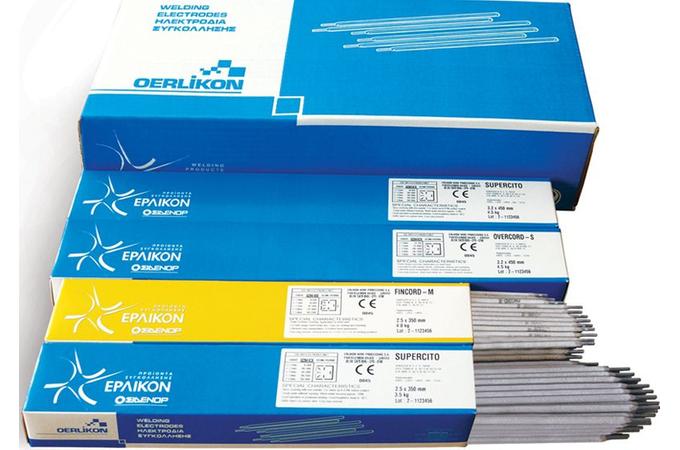 My welding machine shuts down every few minutes during operation. Is there something wrong with it? My welding machine shuts down every few minutes during operation. Is there something wrong with it? |
 |
| Depending on their specification, welding machines may operate continuously for a few minutes for a given amperage output. After that, due to overheating of their components, they automatically shut down in order to protect them from permanent damage. | |
 What are TIG and MIG welding? What are TIG and MIG welding? |
 |
| TIG and MIG are two widely used welding processes. TIG welding uses a non-consumable electrode that provides the arc while a separate filler material in the form of a rod is used. In addition, the TIG torch delivers a shielding gas to the weld site to protect the weld pool from oxidation, to provide the arc formation medium, to shape the bead and control the characteristics of the weld. It produces high quality welds and is especially suitable for aluminium and stainless steel but lacks in productivity. In MIG welding, filler wire, which doubles as the arc formation electrode, is automatically fed to the weld. Inert or active gas is delivered to the weld area in much the same way as in TIG welding for roughly the same purpose. MIG welding offers high productivity and is particularly suited for automatic welding systems (e.g. robotic systems). |
|
 What is Duty Cycle? What is Duty Cycle? |
 |
| Duty cycle, usually denoted as a percentage, is the amount of time in a ten-minute period that a welding machine may operate continuously before it shuts down. For example, a machine with a 60% duty cycle at 400 amps may be operated continuously for 6 minutes at 400 amps, before it automatically shuts down to protect its components from overheating damage. After a cooling down period, the machine is ready to operate again. | |
 What shielding gases are commonly used? What shielding gases are commonly used? |
 |
| The primary purpose of shielding gas is to displace the air in the weld zone to prevent contamination of the weld zone by atmospheric contaminants. Shielding gas for TIG welding can be argon, helium, or a mixture of argon and helium. Pure or mixtures of argon, helium and carbon dioxide (CO2) are the principal shielding gases used in MIG welding, while oxygen may be added for arc stabilisation. | |
 What is the role of polarity in stick welding? What is the role of polarity in stick welding? |
 |
| In stick welding, around 30 % of the total heat is generated at the negative pole, with the remaining 70 % generated at the positive pole. Consequently, using DC+ will generate most heat at the electrode, thus producing a flat, shallow bead, whereas DC- will produce a narrow bead with high penetration. | |
 I use pure CO2 gas to MIG weld mild steel. How can I improve the arc operation and weld bead appearance? I use pure CO2 gas to MIG weld mild steel. How can I improve the arc operation and weld bead appearance? |
 |
| CO2 gas offers satisfactory protection to the weld pool but tends to create convex beads and does not provide optimum arc operation. Additions of argon will offer better arc stability and good bead profile if the application requires it, taking into consideration the higher cost of argon. | |
 Why should I replace the wire contact tip often in MIG welding? Why should I replace the wire contact tip often in MIG welding? |
 |
| Contact tip condition in MIG welding is of paramount importance. Wear from use and/or contamination from weld spatter causes arc instability, poor wire feed and low weld bead quality. Check the contact tip condition often and make sure you always use the correct size, according to the wire diameter in use. | |
 What are low hydrogen electrodes? What are low hydrogen electrodes? |
 |
| Hydrogen induced cracking is a major issue in welds and certain welding conditions may introduce high cracking risks for the integrity of the weld joint. Such is the case when high residual stresses, large thermal “pools” or high strength steels are involved. To alleviate such effects, low hydrogen electrodes have been introduced, which greatly reduce cracking risks when combined with proper welding procedures. | |
 Why is preheat sometimes required before welding? Why is preheat sometimes required before welding? |
 |
| Preheating the steel to be welded slows the cooling rate in the weld area. This may be necessary to avoid cracking of the weld metal or heat affected zone. The need for preheat increases with steel thickness, weld restraint, the carbon/alloy content of the steel, and the diffusible hydrogen of the weld metal. Preheat is commonly applied with fuel gas torches or electrical resistance heaters. | |
 How do I store low hydrogen electrodes? How do I store low hydrogen electrodes? |
 |
| Low hydrogen electrodes must be treated with care to perform their primary function properly. They must be stored in a dry area and should always be redried if exposed to the atmosphere. To ensure their optimum operation regarding the avoidance of hydrogen cracking, after redrying them and before use, keep them in a suitable quiver. | |
-
- HAND TOOLS
- PLIERS
- HAMMERS
- SCREWDRIVERS
- PIPE WRENCHES
- SPANNERS
- MEASURING TOOLS
- FILES-SHARPENING STONES
- CHISELS
- RIVETERS-STAPLERS
- BUILDER TOOLS
- TILE TOOLS
- POLYOURETHANE FOAM AND SILICON GUNS
- UTILITY KNIFE
- SAWS
- BENCH VICE
- HOISTING TOOLS
- SCISSORS
- LUBRICATION
- WIRE BRUSHES
- GAS TORCHES AND GAS CARTRIDGES
- VARIOUS TOOLS
- IRONWARE
- BOLTS
- BOLTS-SCREWS
- CHIPBOARD SCREWS
- Hexagon wood screws DIN 571
- HEXAGON SCREWS
- THREADED RODS
- CARRIAGE BOLTS DIN 603 GALVANIZED
- SELF DRILLING SCREWS DIN 7504
- CHIPBOARD SELF-DRILLING SCREWS
- CHIPBOARD SCREWS
- PAN HEAD TAPPING SCREWS DIN 7981
- TAPPING SCREWS COUNTERSUNK DIN 7982
- TAPPING SCREWS PAN-HEAD SQUARE
- TAPPING SCREWS COUNTERSUNK SQUARE
- WAFER HEAD SREWS
- PAN HEAD SELF DRILLING SCREWS DIN 7504
- SELF DRILLING COUNTERSUNK DIN 7504
- SELF DRILLING WAFER HEAD SREWS
- MACHINE SCREWS DIN 7985
- MACHINE SCREWS IMPERIAL BSW
- ALLEN DIN 912 8.8
- CONCRETE TORX HEAD SCREWS
- PLOW BOLTS
- BRAKE SCREWS
- HANGER BOLTS
- Flat Head Countersunk DIN 965
- Deck screws
- WALL PLUGS
- WALL PLUGS
- CAVITY WALL PLUGS
- TMT WALL PLUGS
- NAYLON HAMMER FIXINGS
- THROUGH BOLTS
- SHIELD ANCHORS
- EYE BOLT ANCHORS
- HOOK BOLT ANCHORS
- PLASTERBOARD TMC PLUG
- SELF DRILLING METAL PLASTERBOARD PLUG
- SELF DRILLING NAYLON PLASTERBOARD PLUG
- NAYLON PLASTERBOARD PLUG
- TML PLUG FOR YTONG
- INSULATION PANEL FIXINGS
- GLUE ANCHORS
- BRASS ANCHOR TO
- Drop-in Anchors
- NUTS
- WASHERS
- ANGLE SCREWS-HOOKS
- BLIND RIVETS
- NAILS
- MISCELLANEOUS
- BOLTS-SCREWS
- CHEMICALS-GLUES
- PLUMBING-HEATING
- FURNITURE FITTINGS
- WORKERS PROTECTION
- POWER TOOLS
- AGRICULTURAL TOOLS
- ELECTRICAL EQUIPMENT
- MISCELLANEOUS
- HOME SUPPLIES
- PAINT SUPPLIES
- STORAGE AND MOVING SYSTEMS
- PACKING MATERIALS
- CURTAINS
- HAND TOOLS
Customer Service
Information



© sidirika-nikolaidi.gr Powered by Softways
We use cookies to ensure that we give you the best experience on our website.
Ι agree





